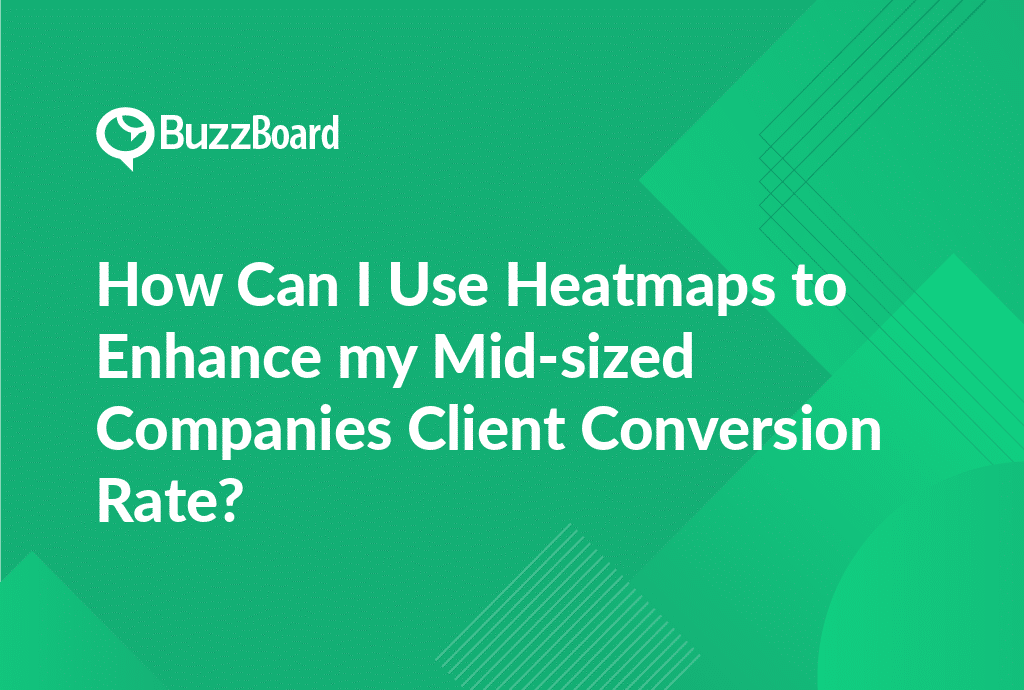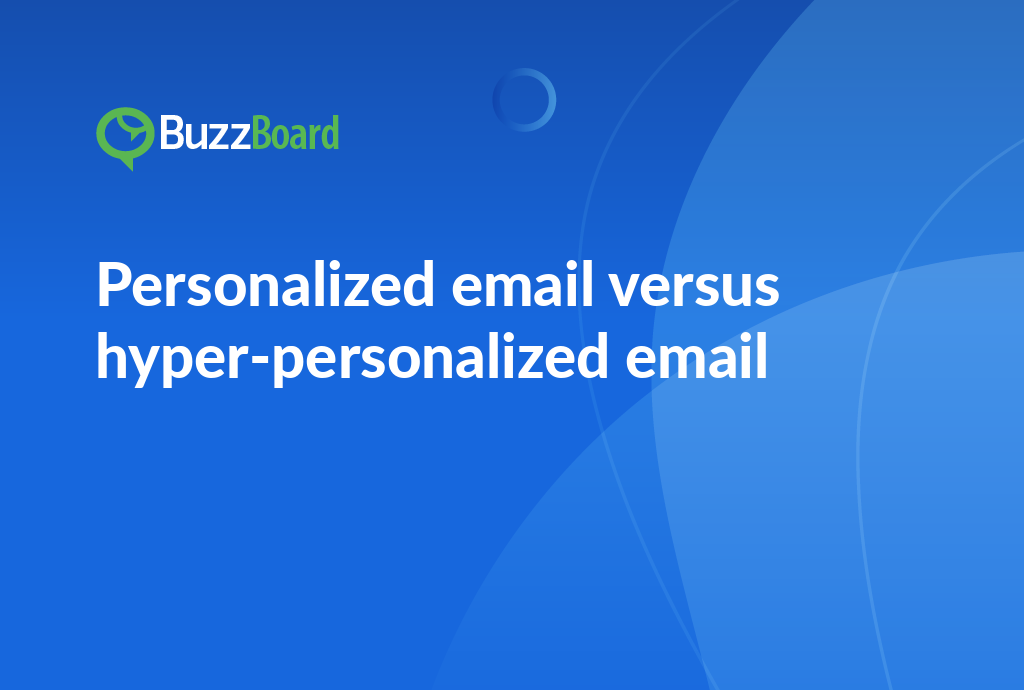How can I use heatmaps to boost my mid-sized company’s client conversion rate? Heatmaps can be a powerful tool to identify and optimize conversion bottlenecks on your website. By analyzing user behavior and click patterns, heatmaps can help you understand where users are getting stuck, what’s causing friction, and how to improve the user experience. In this article, we’ll explore how to use heatmaps to enhance client conversion rates, including how to set up heatmaps, what to look for, and how to use the insights to make data-driven decisions. Learn how to increase conversions and drive business growth with heatmaps.
Understanding the Concept of Heatmaps and Its Implications on Studying User Behavior Analysis for Improving Client Conversion Rates in Mid-Sized Companies
As sales professionals at digital marketing agencies, it’s essential to understand the potential and power of heatmaps. These dynamic data visualization tools demonstrate where users click, scroll, and pause on a webpage. Insight drawn from heatmap analysis helps in user behavior analysis, directly influencing engagement and conversions for mid-size company clients.
Heatmaps illuminate how users interact with site content and design. They can indicate if users struggle with navigation, if they get sidetracked by nonessential elements, or if they don’t engage with key conversion areas. Analyzing heatmap data enables agencies to make UX optimization decisions to boost conversion probabilities.
Heatmaps are a powerful tool that provides valuable insights into how users interact with a website, revealing areas that attract the most attention and those that are often overlooked. By analyzing these heatmaps, designers and SEO experts can gain a deeper understanding of user behavior, identifying patterns and trends that inform data-driven decisions. This actionable intelligence enables them to make targeted adjustments to website layouts, reposition buttons, and refine content strategies, ultimately enhancing the overall user experience and conversion rates.
The benefits of using heatmaps to improve client conversion rates are far-reaching and long-lasting. By leveraging this data, businesses can create experiences that resonate with their target audience, fostering a deeper connection and increasing the likelihood of conversion. Heatmaps provide a unique window into user behavior, allowing businesses to identify areas of improvement and optimize their website for maximum impact.
In today’s competitive digital landscape, understanding user behavior is crucial for driving conversions and staying ahead of the competition. Heatmaps offer a valuable tool for businesses looking to gain a competitive edge, providing actionable insights that inform strategic decision-making. By analyzing heatmaps, businesses can:
- Identify areas of high engagement and focus on optimizing those sections
- Pinpoint areas of low engagement and make targeted improvements
- Refine content and layout to better align with user needs and expectations
- Enhance the overall user experience, leading to increased conversions and revenue
In short, using heatmaps to improve client conversion rates is not a passing trend, but rather a critical component of strategic decision-making. By grasping unique user interaction patterns, businesses can create experiences that resonate with their audience, ultimately driving conversions and achieving their goals. By incorporating heatmaps into their toolkit, businesses can gain a deeper understanding of user behavior, make data-driven decisions, and optimize their website for maximum impact.
Insights Into How Heatmaps Can Be Effectively Utilized to Boost Conversions in Mid-Sized Companies
Heatmaps are a powerful tool that can be leveraged to significantly enhance conversions in mid-sized companies. By providing actionable insights into user behavior analysis, heatmaps offer a unique opportunity for UX optimization, allowing businesses to better understand their audience and tailor their website to meet their needs.
A heatmap is a visual representation of website users’ activities, highlighting the areas that receive the most attention or interaction. By capturing clicks, scrolls, and mouse movements, heatmaps provide valuable information on popular sections, pain points, and navigation issues on the website. This comprehensive analysis can significantly aid in modifying and personalizing the user experience, ultimately stimulating conversions.
For instance, sales representatives can use scroll-heatmaps to gain a deeper understanding of how far users are willing to scroll down a page. If important information or interactive elements are beyond this point, the layout can be rearranged accordingly. By making data-driven decisions based on user behavior analysis, businesses can create a more targeted and effective strategy to enhance conversions.
Click-heatmaps, on the other hand, can help identify non-interactive elements that users are attempting to engage with. To optimize UX, these elements can either be made interactive or replaced with actionable ones like CTAs or links. By making these changes, businesses can create a more intuitive and user-friendly website that encourages visitors to take action.
For mid-sized companies with often limited resources, utilizing heatmaps can be a crucial advantage. By adopting a user-centric approach, businesses can elevate the intuitiveness and appeal of their website to visitors, thus advancing conversion rates. This approach can also help businesses to identify and address potential pain points, reducing bounce rates and increasing customer satisfaction.
In addition, heatmaps can help businesses to identify areas of their website that are not performing well, allowing them to focus their efforts on improving those areas. By using heatmaps to inform their design and development decisions, businesses can create a more effective and efficient website that meets the needs of their target audience.
Sales representatives, by deepening their understanding of heatmaps for UX optimization, can transform their mid-sized clients’ conversions remarkably. By employing user behavior analysis and actionable insights, businesses can make a significant impact on their online presence and drive real results. By leveraging the power of heatmaps, businesses can create a more effective and efficient website that drives conversions and grows their online presence.
The Correlation Between UX Optimization and Effective Use of Heatmaps for Improving Client Conversion Rates in Mid-Sized Firms
Understanding user behavior is a crucial aspect of helping mid-sized companies’ clients boost their conversion rates. One powerful tool that can help achieve this is the application of heatmaps, which provide a visual representation of data that offers actionable insights into user behavior on a website. Heatmaps are an essential component of user experience (UX) optimization, as they enable businesses to analyze how users interact with different elements on a website and make data-driven decisions to improve the UX design.
The relationship between heatmaps and UX optimization is intrinsic. By analyzing how users interact with various elements on a website, businesses can identify areas for improvement and make targeted modifications to enhance the user experience. In the digital marketing landscape, an effective UX design is critical in guiding users seamlessly from browsing to conversion. Heatmaps help businesses achieve this by providing concrete data to back up theories about user behavior, allowing them to make informed decisions about how to optimize their website for maximum conversions.
However, assumptions about user behavior are not enough to drive conversions. That’s where heatmaps come into play. They track and analyze patterns and trends, providing businesses with a deeper understanding of how users interact with their website. By analyzing heatmap data, businesses can identify areas of high engagement, such as specific sections of a webpage that consistently garner user attention. This information can be used to inform strategic decisions about where to place calls to action, key messages, and other important elements on the website.
To integrate heatmaps into your UX strategy, it’s essential to understand the different types of heatmaps available and the unique insights they offer. For example, scroll maps show how far users scroll down a page, suggesting where valuable content might be hidden. This information can be used to optimize content placement and ensure that important information is easily accessible to users. Click maps, on the other hand, reveal where users most frequently click, informing button or link placement for optimized UX.
Move maps, which track user movement and scrolling behavior, can also provide valuable insights into user behavior. By analyzing move map data, businesses can identify areas of the website where users tend to get stuck or struggle to navigate. This information can be used to optimize the website’s layout and design, making it easier for users to find what they’re looking for and increasing the chances of conversion.
Using heatmaps to analyze user behavior and incorporating this information into UX optimization can have a significant impact on conversion rates for mid-sized companies. As a sales representative, you can offer these valuable insights to enhance your client’s digital strategy and help them achieve their business goals. Remember, heatmaps are not about tracking individual users but understanding patterns in user behavior to drive conversions. By leveraging heatmaps and UX optimization, businesses can create a seamless user experience that guides users from browsing to conversion, ultimately driving revenue and growth.
Actionable Insights Derived From Heatmap Data Analysis and Their Direct Impact on Client Conversions for Mid-Sized Companies
Heatmaps have become an indispensable tool for mid-sized companies seeking to optimize their user experience and boost conversion rates. By providing a visual representation of user behavior on a website, heatmaps offer a precise understanding of how users interact with specific page elements, making them a crucial component of User Experience (UX) optimization strategies.
A heatmap uses color to illustrate high and low activity areas on specific website pages, allowing digital marketers to identify which page sections users most frequently interact with, and which buttons or spaces they disregard. This information can be used to pinpoint areas of a site layout or design that may be discouraging conversions, and make data-informed decisions to improve the user experience.
For instance, if a non-focal point on your webpage garners a lot of attention, you can redesign to redirect users toward your desired call-to-action. Similarly, if users are consistently ignoring a particular section of your website, you can reorganize the content to make it more prominent and attention-grabbing. By making these data-driven decisions, mid-sized companies can significantly elevate client conversions and improve overall website performance.
To fully leverage the insights provided by heatmaps, it’s essential to integrate them with other analytical tools within your marketing repertoire. Combining heatmap data with other metrics, such as click-through rates, bounce rates, and time-on-page, can offer a deeper understanding of user behavior, unveiling patterns and trends that might otherwise escape notice.
For example, you may discover that users are spending more time on a particular page, but not converting at the expected rate. By analyzing the heatmap data, you may find that the call-to-action is not prominent enough, or that the content is not resonating with users. By making adjustments to the page design and content, you can optimize the user experience and improve conversions.
In summary, using heatmaps to boost client conversions is critical in today’s data-centric marketing environment. The key to success lies not just in collecting data, but in converting it into actionable insights that significantly influence conversions. By integrating heatmaps with other analytical tools and using the insights to inform data-driven decisions, mid-sized companies can optimize their user experience, improve conversions, and drive business growth.
Example of a Mid-Sized Company Successfully Enhancing Their Client Conversion Rate Using Heatmaps
Understanding customer behavior is a crucial aspect of boosting client conversion rates for mid-sized companies. One effective method for achieving this is by leveraging the power of heatmaps for user behavior analysis. A compelling example illustrates how a mid-sized company successfully implemented this tactic to transform browsers into loyal customers.
The company in question had significant web traffic, but their conversion rates were less than impressive. To address this challenge, they opted for UX optimization as their improvement strategy. By deploying heatmaps, they gathered valuable insights on site interaction, which provided a visual representation of user behavior data. This allowed them to identify areas that attracted the most and least interest from visitors.
The heatmaps revealed that visitors often left the site due to confusing navigation and a weak call-to-action strategy. Armed with this knowledge, the company was able to pinpoint their weaknesses and make targeted adjustments to their UX. They reorganized their site layout, simplified their navigation, and relocated their call-to-action buttons to the areas most visited by users, as illuminated by the heatmaps.
The results were impressive. The company witnessed a noticeable lift in their client conversion rate, which served as a testament to the importance of heatmap analysis in digital marketing tactics. By using heatmaps to analyze user behavior, the company was able to identify and address the pain points that were hindering their conversion rates, ultimately leading to increased customer loyalty and revenue.
For sales representatives at digital marketing agencies, this example serves as a valuable lesson. By applying these findings to aid their small and local business clients, they can help them unlock untapped potential for development and customer loyalty. By effectively employing heatmaps to augment mid-sized companies’ client conversions, digital marketing agencies can differentiate themselves from competitors and establish themselves as thought leaders in the industry.
In addition to the benefits mentioned above, heatmap analysis can also provide a range of other valuable insights. For example, heatmaps can help identify:
- Areas of the site that are most engaging and attention-grabbing
- Where users are getting stuck or experiencing friction
- Which elements of the site are most effective at driving conversions
- Where users are abandoning their journey and why
By leveraging these insights, businesses can make data-driven decisions to optimize their website and improve the overall user experience. This can lead to increased conversions, improved customer satisfaction, and a competitive edge in the market.
The use of heatmaps for user behavior analysis is a powerful tool for mid-sized companies looking to boost their client conversion rates. By identifying areas of weakness and making targeted adjustments to their UX, businesses can unlock untapped potential for development and customer loyalty. As a result, digital marketing agencies that can effectively employ heatmaps to augment their clients’ client conversions will be well-positioned to drive success and establish themselves as leaders in the industry.
Conclusion
In conclusion, heatmaps can be a game-changer for mid-sized companies looking to boost their client conversion rates. By leveraging the power of heatmaps, you can gain valuable insights into user behavior, identify conversion bottlenecks, and make data-driven decisions to optimize your website and improve the user experience.
By following the steps outlined in this article, you can set up heatmaps, analyze the data, and use the insights to make targeted improvements to your website. Whether you’re looking to increase form submissions, drive more sales, or boost engagement, heatmaps can help you achieve your goals.
Remember, the key to success is to use heatmaps in conjunction with other conversion optimization strategies, such as A/B testing and user feedback. By combining these approaches, you can create a powerful conversion optimization strategy that drives real results.
So why wait? Start using heatmaps today to unlock the secrets of your website’s user behavior and start driving more conversions. With the right tools and strategies, you can take your mid-sized company to the next level and achieve the success you’ve always dreamed of.









